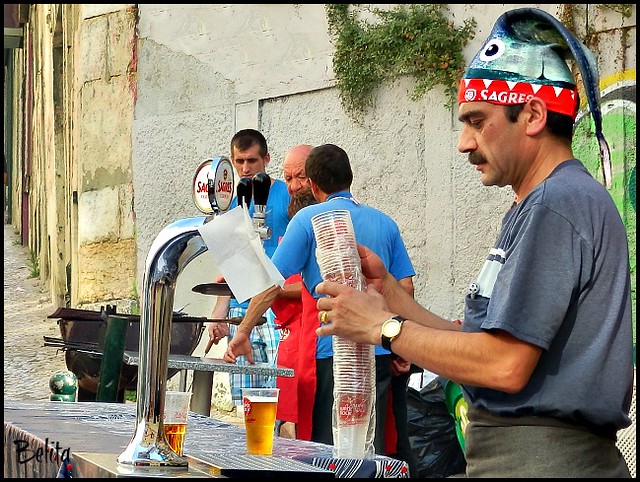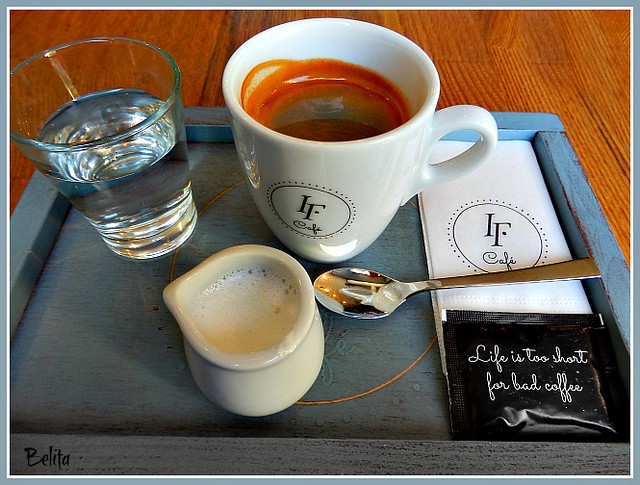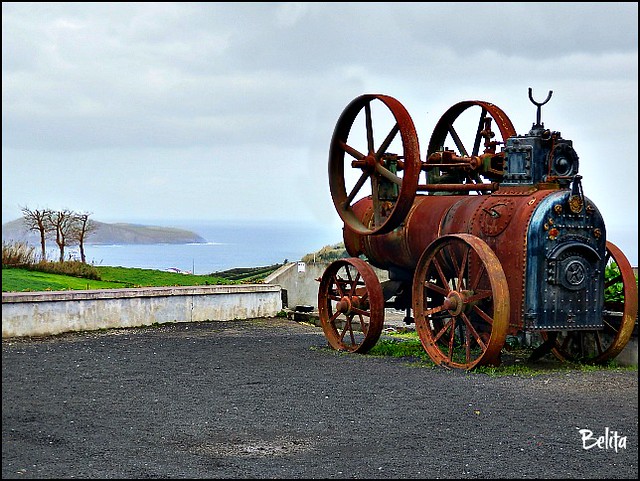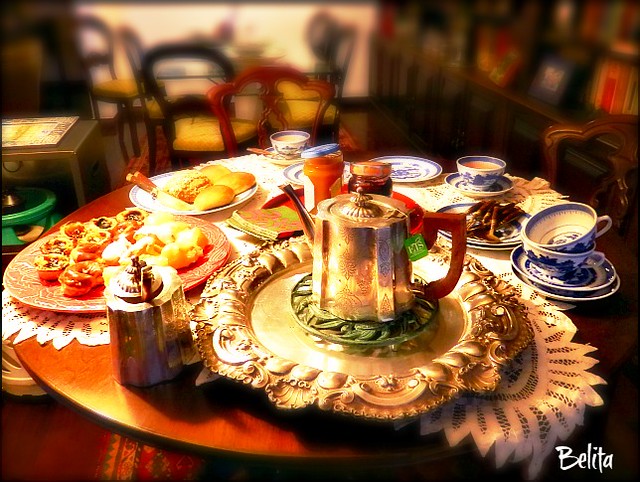Thanks, Mitch, for giving me once again the opportunity to host a PT Challenge. We all have our favourite drinks, yet either they are spirits, fruit juice or simply water, they are not food but drinks. So, this week, our theme is 'Drinks'.
Cheers!
Ready to serve beer at a festival in Lisbon. Please look at the sardine-shaped headgear....

Three different drinks in one single tray...

Old-style steamer used at a tea production company, in the Azores. The principle is simple: to cook the plucked leaves with steam as quickly and evenly as possible so as to stop any enzymatic activities in the leaves for subsequent steps of shaping and drying.
The tea (green and black) that is produced over there is called 'Gorreana'. If you would like to know further about this only tea plantation and factory in Europe, pls visit the site http://gorreana.pt/en/
.


Time for some tea ...

Hi belita what a cool theme love all yours especially the last one
ReplyDeletethe third one is fascinating will come read about it
Thanks, Heidi!
DeleteHi Belita!! Many thanks for hosting this week. A really good theme, I don't think we've done this one before. I like the barman's 'sardine hat' in the first shot. Is this at the sardine festival? A very good combination of different drinks in the second photo. I did not know there was a tea plantation in the Azores. How interesting, I will have to look it up. Your photo of the steamer is wonderful!! A very elegant afternoon tea in your final shot.
ReplyDeleteActually, we don't have a specifically named sardine festival but during the current month, both in Lisbon and in Oporto that celebrate their patron saints, sardines as well as shredded cabbage soup are very common at every restaurant and even at street stalls. The reason for the tea plantations on the island of St. Miguel (Azores) is explained by the following fact: in the early 19th centurys, tea plants were given as a gift by the Emperor of China to the Portuguese King Joao VI, who was then residing in Brazil. The plants flourished in Rio de Janeiro gardens. After the orange blight, tea seeds were brought from Brazil to Sao Miguel and planted throughout the northern coastal region of the island. Camellia sinensis was already growing as an ornamental plant on the island. The new crop, however, was intended for cultivation, manufacture and exportation to Europe. Two Chinese natives, a tea expert and an interpreter from Macau were brought in to assist the project in 1878, and the tea plants prospered in 14 gardens. Two out of those first 14 tea gardens on the island of St. Miguel, still remain.
DeleteWonderful theme and great pictures, Belita. Love the sardine hat in the first; he seems to be a dedicated worker. Nice shot from the IF cafe, and they are right. Life is too short for bad coffee. Fascinating tea steamer, I will need to look up the story. My favorite is the photograph on the bottom. Not only does everything look delicious, but I love the blurred background which nicely sets off the treats.
ReplyDeleteI took that photo while wandering through a Moorish district, one of the main neighbourhoods for the festivals that are held in Lisbon during this month. People don't have the meals inside restaurants but always outside. The weather is fine and the smell of the charcoaled sardines is very strong, beer and wine are seen outside, ready to be served. Thanks for your kind comment.
DeleteAt last something completely different and interesting. The sardine beer festival is very original. I like the three different drinks and their contrasting colours brightening it all up. The tea plantation is interesting, and tea time seems to be the same all over the world.
ReplyDeleteThanks, Pat, for your kind comment....
DeleteCool fella
ReplyDeleteMulti-tasking
Terrific old machinery
Cuppa time
Thanls, Andres, for your visit and kind words....
DeleteYou're most welcome, Belita :)
Delete